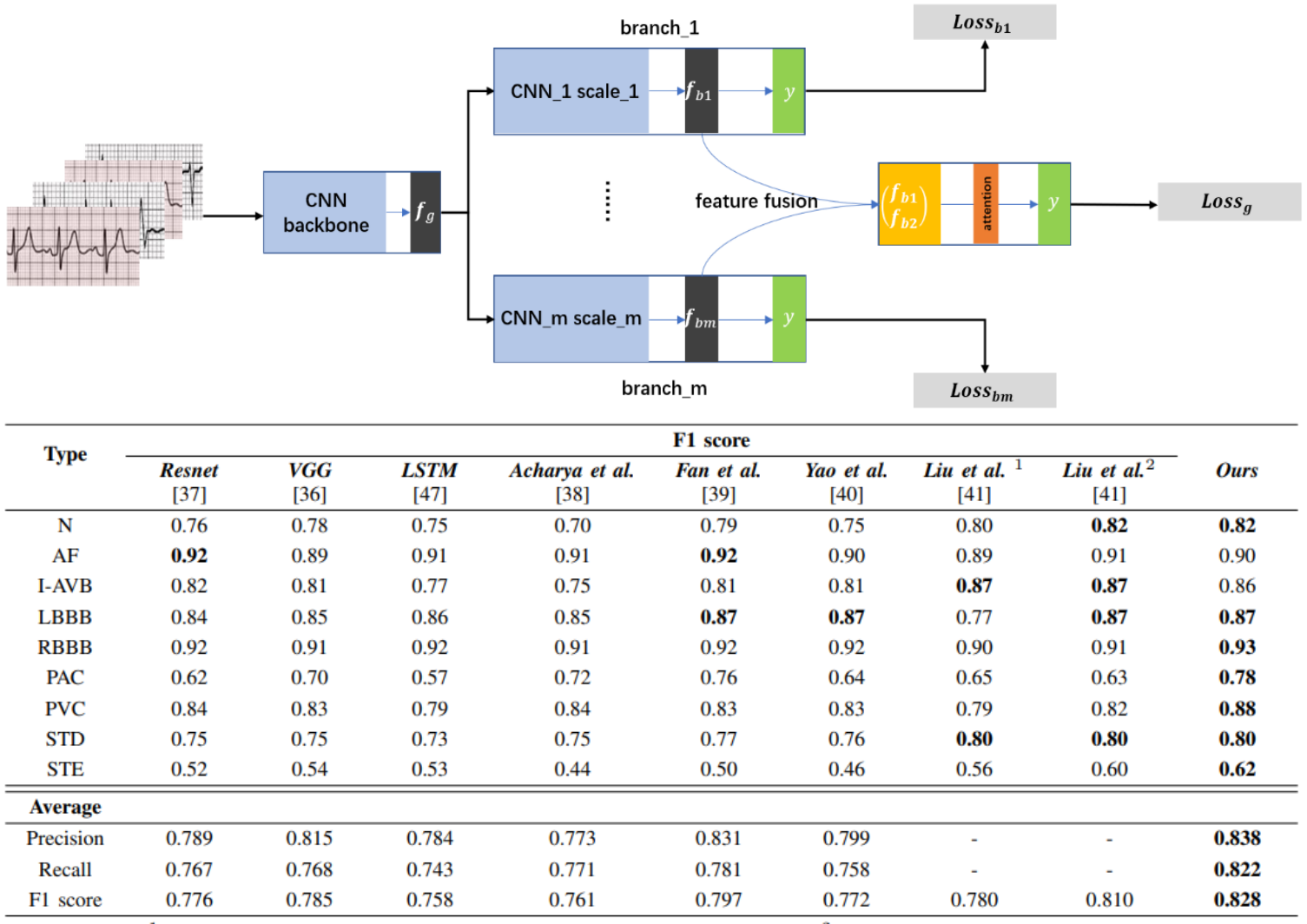Scientists Propose Neural Network for Multi-Class Arrhythmia Detection
Date:08-05-2020 | 【Print】 【close】
Cardiovascular diseases are preventable, yet they remain leading causes of death, disability.
Automated electrocardiogram (ECG) analysis for arrhythmia detection plays a critical role in early prevention and diagnosis of cardiovascular diseases.
Due to variable abnormal rhythms and noise distribution, extracting powerful features from raw ECG signals for fine-grained diseases detection is still a challenging problem today.
Previous research works had depended on heartbeat-wise or single-scale signal segments mostly, ignored underlying complementary information of different scales in spatiotemporal aspect of multi-lead ECG signal.
A research team led by Prof. FAN Jianping and Prof. LI Ye from the Shenzhen Institutes of Advanced Technology (SIAT) of the Chinese Academy of Sciences proposed a new ECG analysis method based on deep learning for the case of unsatisfactory recognition accuracy of multiple arrhythmias caused by the above problems.
Unlike the existing ECG detection approaches considering only heartbeat or single-scale signal information, a novel deep multi-scale fusion convolutional neural network architecture for arrhythmia detection is formulated. The designed network architecture employed multi-scale features optimization, and integrated multi-loss learning simultaneously.
For ECG analysis, cross-scale features of segments with different sizes were extracted by multiple convolution kernels with different receptive fields. In addition, spatial attention was utilized for further mining the discriminative information of signal.
Joint optimization strategy with multiple losses of different scales was designed, which not only learned scale-specific features, but also realized cumulatively multi-scale complementary feature learning during the learning process.
The above method has realized the effective discrimination of 9 kinds of arrhythmia diseases. Based on 9831 12-lead ECG signals, about 609522 beats (A 12-lead ECG paints a complete picture of the heart's electrical activity by recording information through 12 different perspectives), the accuracy of arrhythmia recognition has reached 83.8%, which outperformed other state-of-the-art approaches (Figure).
"With the help of multi-scale feature fusion, the proposed method highlights the related irregular area compared with other approaches. The segment location of abnormal pattern is more accurate, which can help doctors to locate and diagnose abnormal patterns faster and better, and then improve the efficiency and accuracy of diagnosis," said Dr. WANG Ruxin, first author of the study.
This study was published as an Editors’ suggestion in IEEE Journal of Biomedical and Health Informatics on April 13.

Figure. Schematic diagram of proposed method and recognition performance of arrhythmias. (note: N: Normal, AF: Atrial fibrillation, I-AVB: First-degree atrioventricular block, LBBB: Left bundle brunch block, RBBB: Right bundle brunch block, PAC: Premature atrial contraction, PVC: Premature ventricular contraction, STD: ST-segment depression and STE: ST-segment elevated.) (Figure by Dr. WANG)
Media Contact:
ZHANG Xiaomin
Email: xm.zhang@siat.ac.cn